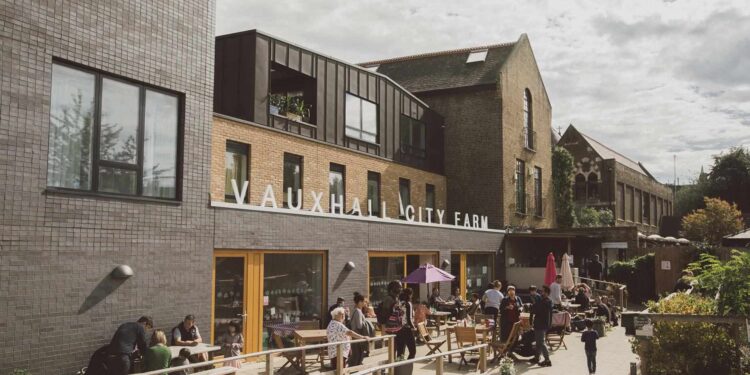Case Study: Successful Property Investments in London (and Lessons Learned)
The London property market, while challenging, continues to offer immense opportunities for astute investors. Beyond the headlines and market forecasts, real success stories emerge from those who apply strategic thinking, diligent research, and a pragmatic approach. Understanding these journeys – their triumphs and their pitfalls – provides invaluable lessons for any London landlord looking to boost their portfolio.
This detailed case study presents a composite example of a successful property investment in London during the mid-2020s, highlighting the strategies employed, the challenges faced, the key outcomes, and the enduring lessons learned for 2025/2026.
The Investor: Sarah, a Portfolio Landlord
Sarah, a seasoned investor based in London, was looking to expand and diversify her existing portfolio of three single-let flats. Her goal was to increase her net rental yield and capitalise on potential capital growth beyond the more saturated inner London markets she already held. She had a keen eye for value-add opportunities and understood the importance of long-term holds.
The Investment: The “Abbey Road Anomaly” (A Hypothetical Case)
In early 2023, Sarah identified a dilapidated 3-bedroom terraced house in Abbey Wood, South East London (SE2).
- Initial Status: The property was in poor condition, requiring a full renovation, and had been on the market for some time, making it unattractive to typical owner-occupiers. It had an EPC rating of E.
- Why Abbey Wood?
- Elizabeth Line (Crossrail): Abbey Wood station offered direct, fast links to Canary Wharf (11 mins), Liverpool Street (18 mins), and Bond Street (25 mins). While the initial price surge post-Crossrail opening had stabilised, the long-term impact on connectivity and desirability was still undervalued.
- Regeneration: The area was benefiting from ongoing regeneration, with new homes, commercial spaces, and improved local amenities planned around the station.
- Affordability: Property prices were significantly more affordable than comparable homes just a few Tube stops closer to central London, offering strong potential for yield.
- Demand: Strong demand from young professionals and families seeking value, good schools, and commuter links.
- Investment Strategy: Sarah planned a “Buy, Refurbish, Refinance, Rent” (BRRR) strategy with a view to converting the property into a high-spec HMO for young professionals.
The Journey: Strategy, Challenges, and Adaptations
Phase 1: Acquisition and Initial Refurbishment (Late 2023 – Early 2024)
- Purchase Price: £420,000 (below market value for a renovated 4-bed in the area).
- Financing: Bridging loan for the acquisition and refurbishment costs.
- Refurbishment: Sarah invested £80,000 to transform the property. This included:
- Extensive damp proofing and structural repairs.
- Full rewire and new plumbing system.
- Installation of two new bathrooms and a modern kitchen.
- Addition of an extra bedroom by converting a large reception room.
- Installation of new insulation, double glazing, and a highly efficient boiler to achieve an EPC B rating.
- Complete redecoration, new flooring, and stylish, durable furnishings suitable for professional tenants.
- Challenge 1: Unexpected Costs: During renovation, extensive hidden damp and rotten joists were discovered, adding £15,000 to the budget.
- Lesson Learned: Always factor in a contingency fund (minimum 10-15% of renovation budget) for unexpected issues, especially with older London properties. Thorough pre-purchase surveys are non-negotiable.
Phase 2: Refinance and Letting (Mid-2024)
- HMO Conversion: After refurbishment, the property was configured as a 4-bedroom HMO. Sarah ensured compliance with local (Bexley Council) HMO licensing requirements, including fire safety measures and room sizes.
- Valuation Post-Refurb: The property was revalued at £580,000, demonstrating significant value-add.
- Refinance: Sarah refinanced onto a specialist HMO buy-to-let mortgage, releasing much of her initial capital. She chose a 5-year fixed rate to manage interest rate volatility.
- Tenant Acquisition: Marketed through a local agent specialising in HMOs. Within two weeks, all four rooms were let.
- Rental Income: Each room rented for an average of £750 per month, totalling £3,000 per month for the property.
- Challenge 2: Navigating HMO Licensing: The licensing process was complex, requiring specific floor plans, fire risk assessments, and property inspections.
- Lesson Learned: Engage with specialist HMO solicitors and agents from the outset. Understand the local council’s specific licensing requirements before committing to an HMO strategy.
Phase 3: Ongoing Management and Performance (Late 2024 – Mid-2025)
- Management: Sarah opted for a full HMO management service, costing 15% of gross rent, to handle tenant turnover, maintenance, and compliance, freeing up her time.
- Net Rental Yield: After all expenses (mortgage, management fees, council tax, utilities, insurance, maintenance allowance), the property was generating a healthy net rental yield of over 6.5%.
- Tenant Relations: Proactive communication and prompt maintenance responses led to low tenant turnover, minimising void periods.
- Challenge 3: Regulatory Changes (Renters’ Rights Bill): Sarah had to stay informed about the abolition of Section 21 and the implications for tenant security. While HMOs require specific management, the shift to periodic tenancies and the Decent Homes Standard meant ongoing vigilance.
- Lesson Learned: Property investment is an evolving landscape. Continuously educate yourself on new legislation and adapt your management practices. Professional landlord associations and specialist agents are invaluable resources.
The Outcomes: A Resounding Success
As of mid-2025, Sarah’s Abbey Wood investment has proven highly successful:
- Capital Growth: The property’s value has appreciated from its renovated value of £580,000, now estimated at £605,000 (due to general market uplift and continued Crossrail effect), resulting in a paper gain of £185,000 from the initial purchase price.
- Strong Rental Yield: Consistently achieving a net yield significantly higher than her other traditional single-let properties, contributing substantial cash flow to her portfolio.
- High Occupancy: The high-quality finish and excellent transport links ensured consistent demand, leading to minimal void periods.
- Future-Proofed: The EPC B rating means the property is well-positioned for future energy efficiency regulations.
Key Lessons Learned for London Property Investors
Sarah’s experience, reflecting common successful strategies, offers vital takeaways for current and prospective London landlords:
- Do Your Due Diligence (and then some): Never underestimate the power of thorough research. Understand the micro-market, regeneration plans, transport links, and local council regulations (especially for HMOs).
- Budget for Contingencies: Always allocate a significant buffer (10-15% of refurbishment costs) for unexpected issues, particularly with older properties in London.
- Understand Your Niche: London’s market is vast. Specialising in a specific property type (e.g., HMOs) or tenant demographic (e.g., young professionals) in a targeted area can lead to expertise and better returns.
- Value-Add is Key: In a high-value market like London, simply buying and holding isn’t always enough. Identifying properties where you can genuinely add value through refurbishment or conversion dramatically boosts returns.
- Embrace Professional Advice: Don’t hesitate to invest in specialist solicitors, mortgage brokers, letting agents, and tax advisors. Their expertise can save you far more than their fees.
- Stay Compliant & Adaptable: The regulatory environment is constantly changing (e.g., Renters’ Rights Bill, EPC). Proactively staying informed and adapting your practices is essential to avoid penalties and maintain profitability.
- Prioritise Tenant Experience: A high-quality property, responsive management, and fair treatment lead to longer tenancies, reducing void periods and management headaches.
- Think Long-Term: While rapid gains can happen, property investment in London is generally a medium-to-long-term strategy. Capital appreciation takes time.
Sarah’s “Abbey Road Anomaly” demonstrates that with careful planning, strategic execution, and a willingness to learn from challenges, significant success is achievable in the dynamic London property market.
















